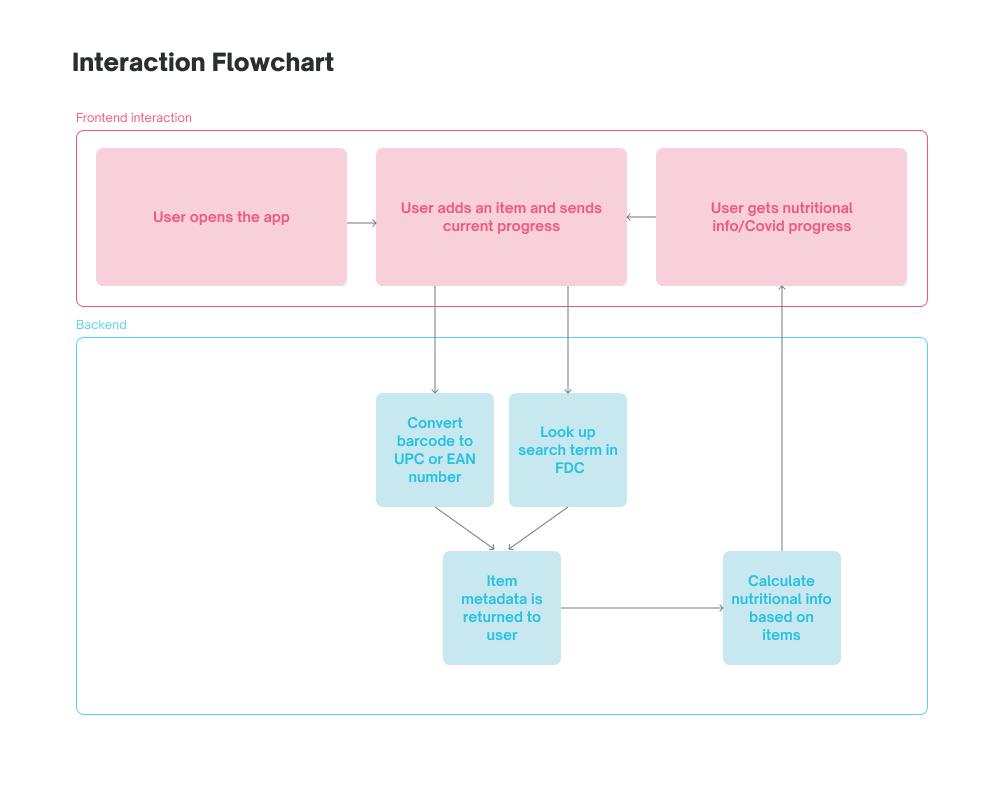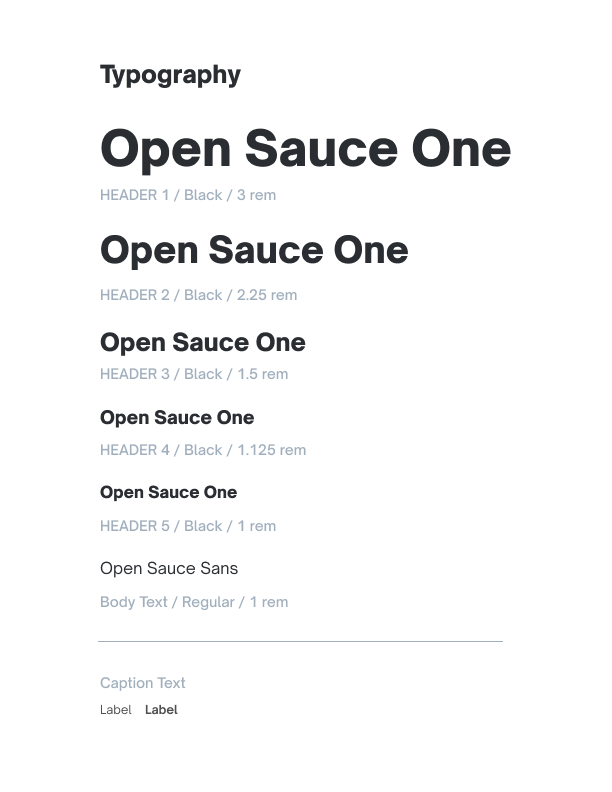Three of our team members had family members who had COVID-19. Concerned with their recovery process, we shared with each other advice on how we could help them. What we found to be a universal piece of advice was maintaining a balanced diet high in nutrients. This notion that well-balanced diet can help accelerate the recovery process is what inspired us to make Recovery, an app that helps users with COVID-19 create a meal plan to aid them in fighting the virus. We want to stress that although vaccines are being distributed and cases are declining, the pandemic is still ongoing, and that COVID-19 can still induce serious symptoms.
Recovery is a nutrition tracking and analysis progressive web app focused on rehabilitating people from COVID-19 through their diet. Within the app, a user is able to input their weight and sex to create a customized meal plan based on their personal nutrition requirements, based on the latest medical research. Users can scan food items via their barcodes and automatically count their meal progress toward their nutrition goals. For items without barcodes, they can alternatively search for the name of their food and select their item. By pressing analyze items, the user is then able to see their progress based on the items that have been added.
In the frontend, we used React.js, Bulma.io, SCSS, and Webpack to create an installable progressive web app. We initially designed our project in Figma, and used these HTML, CSS, and JS libraries to develop the application for use. We used a library called "React Pro Camera" in order to access the camera for the barcode scanning. We also performed image cropping using HTML5 Canvas in order to improve the accuracy of our backend's barcode image recognition algorithm. Recovery uses a REST API to communicate with the backend.
In the backend, we used Python build a Flask REST API with several data endpoints that could be called in the frontend to handle data instructions. Information about a food's nutrients was fetched from the OpenFoodFacts and FoodData Central databases. Using this data, we kept track of nutrient intake and also calculated how many nutrients a person needed based on their sex and weight. Since OpenFoodFacts stored barcodes of items in their API, we decided to implement a barcode scanner feature that would enhance the user experience by allowing them to simply scan their item instead of having to manually search for it. In order to parse the image of the barcode to a barcode number, we utilized pyzbar to decode the barcode into a string format. We added our own modifications to the barcode decoding process using image manipulation in order to improve the accuracy rate of the scanning.
The UI / UX was focused on ease-of-use and simplicity. The key aspects to accomplishing this were are as follows.
- Having a straightforward user interaction loop
- Large, prominent buttons that directed the user
- Intuitive ways to scan and search for items
- Consistent visual design
To tackle these challenges, we approached the design process by creating a color and typography system.
From here, we developed prototype wireframes to determine the structure, visual hierarchy, and components for the application.
We then developed a brand identity to further inform our design decisions. We made sure to add special emphasis on the "COV", indicating our app's focus on the recovery of COVID-19 patients.
We developed our full UI, incorporating elements of the natural design that we used in the logo and branding design.
- How to create progressive web apps (PWAs)
- Front-end and back-end workflow, including using Postman to test our REST API
- Developing in React.js--almost all of our team had 0 experience in React
- Deploying the backend to Google App Engine using Docker
- Barcode scanning implementation with Python
- Optimizing the barcode-image recognition to get a higher success rate
- Nutrient unit conversion from differences in APIs
- Managing state in React without using a state manager like Redux
- Handling and sorting from messy and inconsistent databases
- First time making a mobile PWA
- Migrating from Heroku to Google Cloud and Docker
- Managing CORS (Cross-Origin Resource Sharing) between domains, a browser protection
- Consistent barcode detection through image cropping & post-processing
- Sexy design (UI, logo)
- Mobile browser compatibility
- Ability to share nutrition progress on social media
- Allow users to create their own meal plans with custom nutrition quotas
- Addition of more preset meal plans based on other personalized needs (ex: weight loss, muscle gain, diabetics)
- Optimize loading times
- Flask
- React.js
- Figma
- Python
- SCSS
- Bulma.io
- Docker
- Google Cloud
- Postman
- Netlify
- Pranav Grover
- Tan Huynh
- Christopher Linscott
- Bowen Tang
- Edmund Zhi








